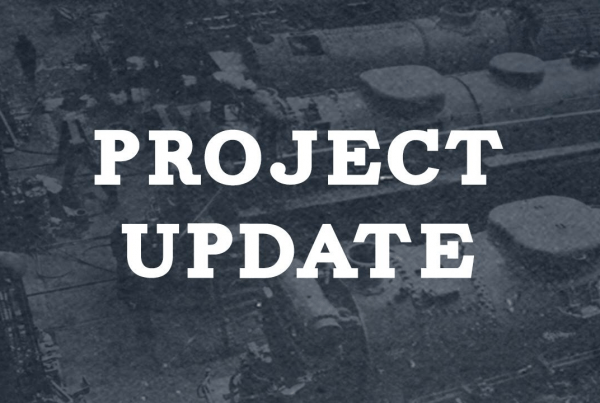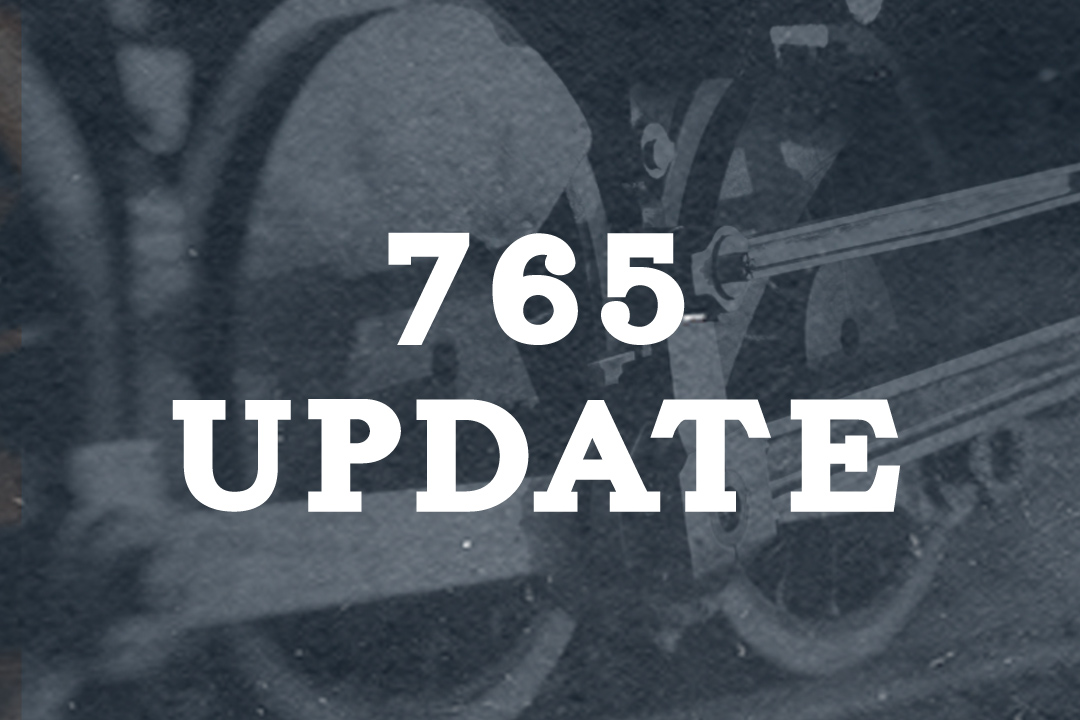Submitted by Steve Winicker.
LAST WEEKENDS SHOP ACTIVITY
We had a productive week with the drawbars being reinstalled and the engine and tender once again one. Quite a few folks worked on various parts of this effort. The steam dome cap was reinstalled on the locomotive and sealed up so that is ready for the hydrostatic test. Chuck Young reinstalled the washout plugs as well. Mark and Jim lapped the blowdowns to reduce leakage from that source.
Other 765 work that was completed included wire brushing much of the fire box sides, thanks Jim. The new, to us, stoker valve was tested on air after some additional lapping and seems to be working properly. Once that was determined the valve stem was repacked and lubricated. Jim took time to inspect the interior of the tender tank and did not find any immediate problems. He collected a few pieces of scale and a paint brush. Al Rayner replaced the cold water pump output gauge which had malfunctioned last year and failed to pass the dead weight test of the gauges.
Other projects saw some work as well with the 358 getting a good going over and some of the electrical system checked out and reportedly passed the various tests on it. Work on inspecting and testing the brakes are underway. The bay window caboose was put on a new set of trucks and only needs to have the brakes hooked up on a warmer day than Saturday. Work on the open-air car is progressing though I don’t have a progress update at this time.
UPCOMING ACTIVITIES
Coming up we need to get the pump for the hydrostatic test out of storage and get the various hook ups ready to go, valves which need to be shut off – shut off and generally go over the engine. We need to wrestle the salamander into the engine cab so we can heat the water prior to hydrostatic testing. I also hope to get the stoker throttle valve back into place. The tests and inspections are moving along but so is the calendar so we need to keep moving along.
SAFETY SENSE
While working on the 765 and other railroad equipment we must loosen and tighten nuts, screws, bolts and the like as we’re maintaining, repairing, and making adjustments to the equipment. Sometimes there is a tendency to “put our all” into it as we tighten up those bolts.
There may be something satisfying about pulling a wrench as hard as you can until it won’t move another hair . . . however that is not doing the equipment any good. In fact, most of the torque (bolt tightness) specifications would really surprise you. Besides the obvious problem of the bolt, stud or pipe being impossible to remove by the next guy, there are some more serious issues that may arise when a bolt is over tightened. Over tightened bolts undergo more stress than it was designed to handle. This not only applies to the nut, screw, or bolt, but also to the framework that is being bolted into. This extra stress can cause the bolt to stretch and a crack to develop in the root of the thread thus weakening the fastener and compromising the safety of the machine especially if the fastener fails during operation.
Not only fastener failure, but injuries can occur during the process of over tightening. You can pull a muscle and the opportunity for the wrench to slip off the nut increases dramatically causing a severe hand injury, loss of balance and a potential fall.
Nuts, bolts and screws need to be tight, but there is a difference between properly tight and backbreaking tight. Know the standard torque to which the fastener is to be tightened and whenever necessary use a torque wrench to properly tightener the fastener. This approach will protect the fastener from damage and the worker from doing potential harm to him or herself.
SAFETY IS JOB 1
SAFETY FIRST ALWAYS


